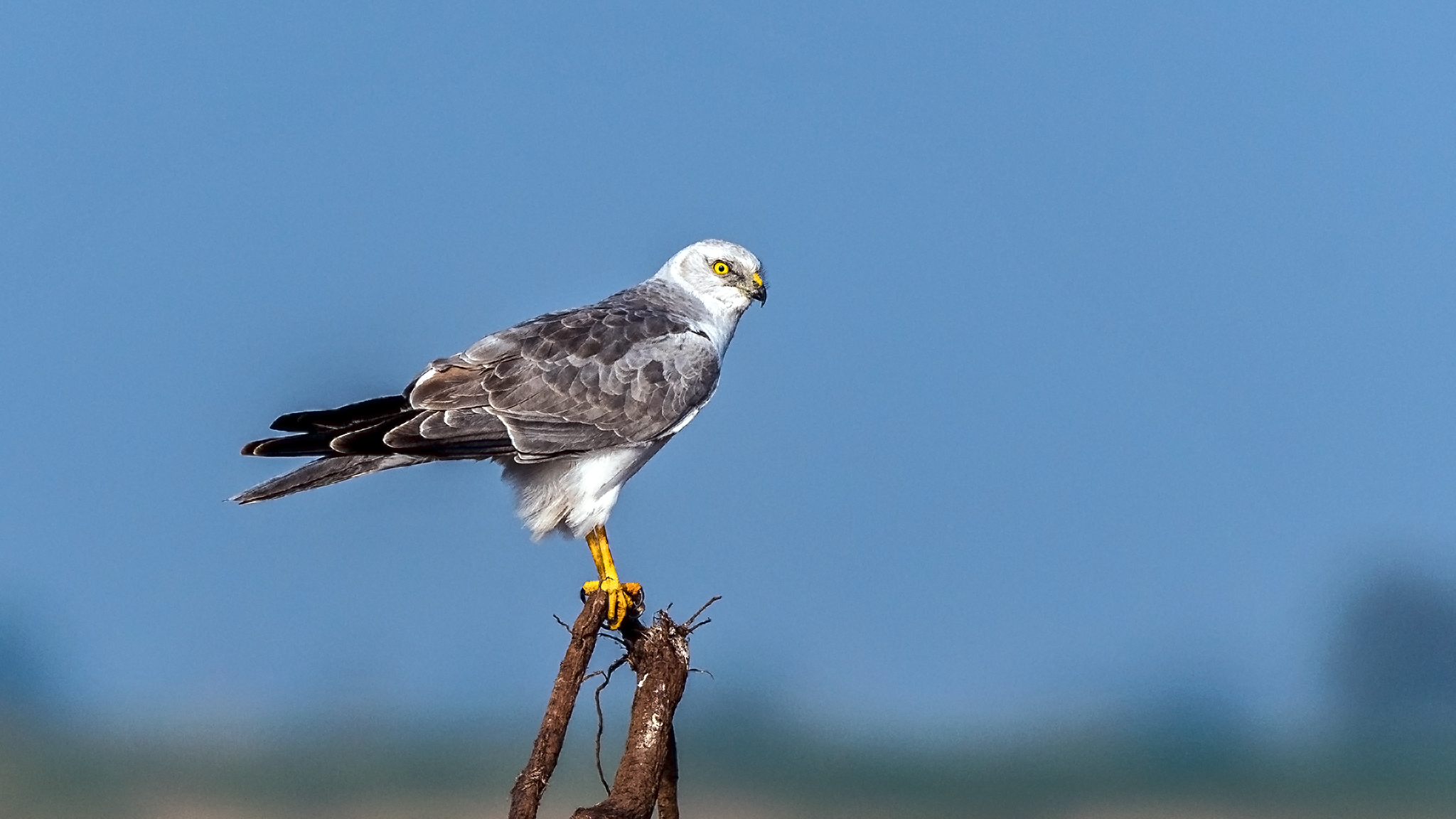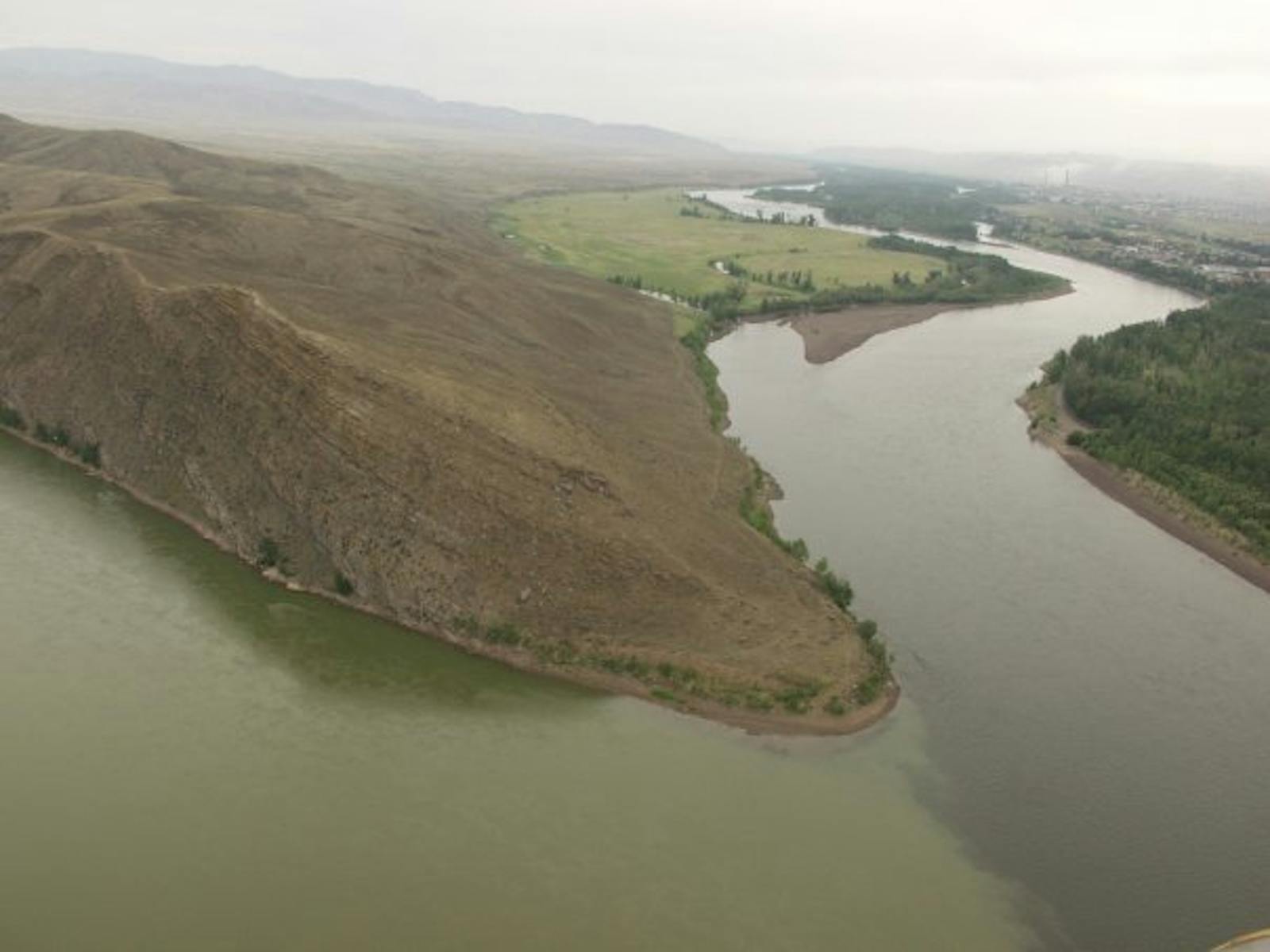Sayan Intermontane Steppe
The ecoregion’s land area is provided in units of 1,000 hectares. The conservation target is the Global Safety Net (GSN1) area for the given ecoregion. The protection level indicates the percentage of the GSN goal that is currently protected on a scale of 0-10. N/A means data is not available at this time.
Bioregion: Sayan Mountain Conifer Forests, Alpine Meadows & Steppe (PA36)
Realm: Central Eurasia
Ecoregion Size (1000 ha):
3,401
Ecoregion ID:
736
Conservation Target:
59%
Protection Level:
2
States: Russia, Mongolia
Tucked between the high ridges of the Western Sayan and Tannu-Ola mountains, the Sayan Intermontane Steppe ecoregion contains meadows of waving grass, bright flowers, and shrublands at an altitude where one would usually find the forest.
Mongolian marmots live in large colonies, foraging the tall grasses, and are hunted by several eagle species patrolling the skies. Skulking under the sheltering vegetation, Pallas’s cats stalk their prey. The ecoregion’s sacred lakes are havens for Dalmatian pelicans and demoiselle cranes.

The flagship species of the Sayan Intermontane Steppe ecoregion is the pallid harrier. Image credit: Mprasannak, Creative Commons
This ecoregion is found between ridges of the Tannu-Ola mountains to the south and the Western Sayan mountains to the north, within the Central Tuva Depression. Within the ecoregion are the Khemchik, Chaa-Khol, Torgalyk–Shagonar, Ulug-Khem, Kaakhem, and Tere-Hol’ Depressions. The upper course of the Yenisei River runs east to west through the ecoregion (in Tuvinian, ‘Ulug-Khem’ is the name of the Yenisei River).
There is a local steppe climate with average monthly temperatures of -22.5–18.6°C. The average annual temperature is -0.5°C, and the mean annual precipitation is around 255 mm. Temperatures in depressions can rise to above 30°C in the summer.
Localized rain shadow effects, topography, and soil conditions combined gave rise to meadow steppes, dry steppes, and desert steppes. In undisturbed areas, tall grasses grow, including smooth bromegrass, Helictotrichon desertorum, and Leymus secalinus. A rich herb layer contains species such as yellow lucerne, Mongolian yarrow, fragrant-flowered garlic, rattle milkvetch, creamy strawberry, and tuberous Jerusalem sage. In river valleys, Carex delicata, stemless thistle, grass-of-Parnassus, and greater yellow-rattle bloom.
Scattered across the ecoregion, there are saline soils and salt lakes, such as Svatikovo and Khadyn Lake, with boarding houses for therapeutic bathers. Salt-tolerant species such as Hordeum brevisubulatum, black needle rush, sea milkwort, and meadow rue are found in these conditions.

Pallas cat. Image credit: Editfmah Adrian Herridge, Creative Commons
Mammals adapted to the steppe habitats include the endangered Mongolian marmot and Pallas’s cat, which depends on the marmot’s burrows for refuge from larger predators such as grey wolves and eagles. Siberian ibex seek out the meadows in wintertime.
The ecoregion hosts numerous bird species, including the endangered saker falcon, vulnerable common pochard, Dalmatian pelican, pallid harrier, eastern imperial eagle, and swan goose. The largest salt lake, Khadyn Lake, is an Important Bird Area with breeding populations of the long-toed stint, demoiselle crane, and common crane.
Within the Tuva region, there are over 3,000 km2 of cropland. Stretches are visible along the river valleys. The steppe meadows are intensively exploited by grazing livestock, and some are mowed. Most are, to varying degrees, degraded pasture. Grazing-tolerant vegetation such as forked-leaf cinquefoil and white clover now predominate.
Khadyn Lake is protected as a National Nature Monument, while Lakes Sut-Khol and Tere-Hol’ are Zapovniks, and part of the Yenisei River is also recognized as an Important Bird Area. The southern tip of the UNESCO Sayano-Shushensky Natural Biosphere Reserve covers a small area of the ecoregion.
While the ecoregion’s lakes are sacred and therefore preserved, the meadows and steppes generally lack protection and are threatened by overgrazing and haymaking. Lodges and cabins are being developed on the shoreline of lake areas. Rubbish dumping and pollution are growing issues.
Priority conservation actions for the next decade
- Prevent overgrazing of meadows and steppes.
- Increase protections for steppe areas, sharing their conservation importance with lakes.
- Manage tourism development and exploitation of lake salt products.
-
-
- Joint Research Centre of the European Commission. 2019. The Digital Observatory for Protected Areas (DOPA) Explorer 4: Sayan Intermontane Steppe. [Online]. [Accessed 13th November 2019]. Available from: https://dopa-explorer.jrc.ec.europa.eu/ecoregion/80815
- Makunina, N. I. and Parshutina, L.P. 2017. Floodplain steppe meadows of the Eastern part of the Altai-Sayan mountain region. In Russian. Vegetation of Russia. 30, pp.78–93.
- Chernousenkoa, G.I. and Kurbatskayab, S.S. 2017. Soil Salinization in Different Natural Zones of Intermontane Depressions in Tuva. Eurasian Soil Science. 50(11), pp.1255–1270. DOI: 10.1134/S1064229317110047
-
Cite this page: Sayan Intermontane Steppe. Ecoregion Snapshots: Descriptive Abstracts of the Terrestrial Ecoregions of the World, 2021. Developed by One Earth and RESOLVE. https://www.oneearth.org/ecoregions/sayan-intermontane-steppe/
-

.png?auto=compress%2Cformat&w=300)

